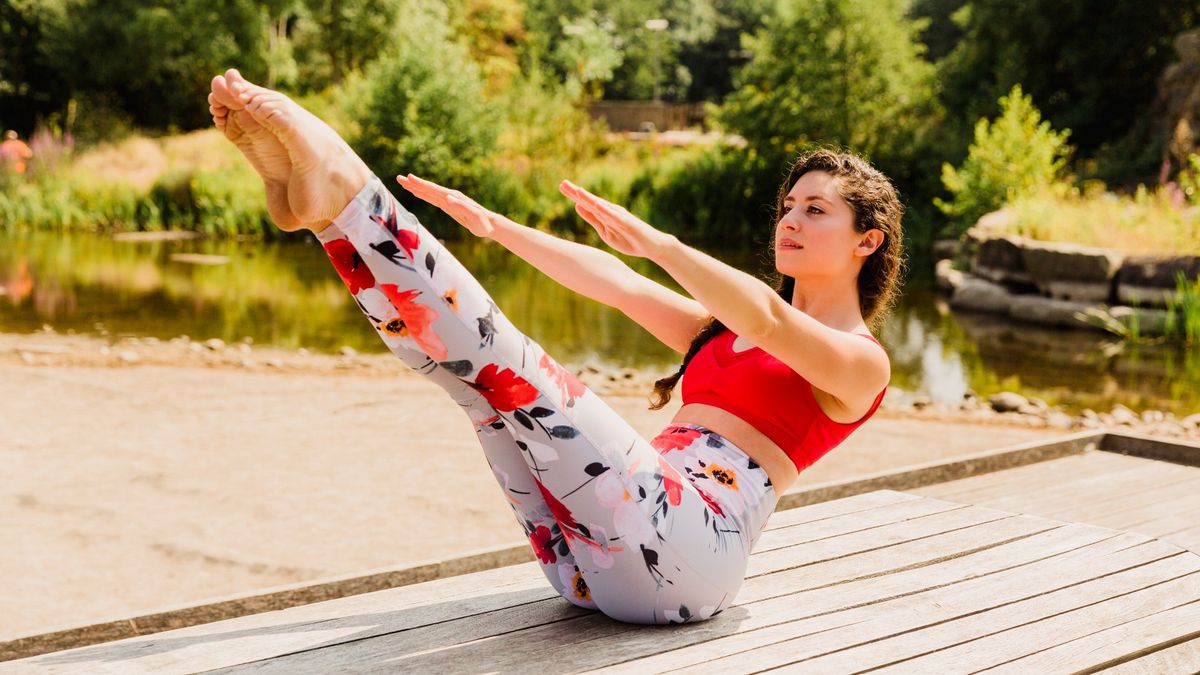When you wake up early you’re more than likely to feel tired, right? Right. You’re also more than likely to have some spare time on your hands to scroll and reach for one of the best coffee makers, right? Right.
So what if you could use just 20 minutes of that valuable time to boost your energy and mood for the day ahead? Wouldn’t that be amazing? It is. So grab yourself a bottle of water, one of the best yoga mats and use this Pilates routine designed by Personal Trainer and Pilates Instructor, Annabel Luke to build strength and flexibility so you can walk into a new day feeling calmer, stronger and more balanced.
The Pilates Routine
This morning workout include low-impact Pilates movements encouraging focused breathing and muscle engagement. “Unlike high-intensity workouts that can sometimes leave you feeling drained, this Pilates routine uses controlled movements that help build strength and flexibility without overexerting the body,” explains Annabel.
“When you breathe deeply and move consciously, you’ll also encourage your body to release endorphins, those feel-good hormones that boost your mood and energy levels naturally.
“All in all — this combination of movement and conscious breathing helps fight fatigue and increases mental clarity, both of which will contribute to higher energy levels throughout the day.”
Your Morning Pilates Moves
There are seven moves in Annabel’s routine, and you’ll do each exercise for 10-12 reps before taking a small break and then starting on the next move. The aim is to not rush and instead focus on your form to get the most out of each and every movement.
You’ll also want to focus on connecting your breath to each movement, which promotes better oxygenation around the body, and therefore more energy to work with. “Not only that but it will help you to create a sense of inner balance and relaxation,” adds Annabel.
The whole thing should take only 20 minutes but transform your entire day. It’s time to shine.
1. Sumo Squat
The Benefits: Gets the blood pumping through your body, while also targeting the inner thighs and glutes. Alongside strengthening, sumo squats also help with hip flexibility, core stability and overall balance.
How to Do It: Stand with your feet wide and toes turned out. Lower into a sumo squat by bending your knees and sitting your glutes down, keeping your chest open and core engaged. Return to standing by pressing through your heels and squeezing your glutes at the top. Repeat for 12 reps.
2. Lunge + Shoulder Press
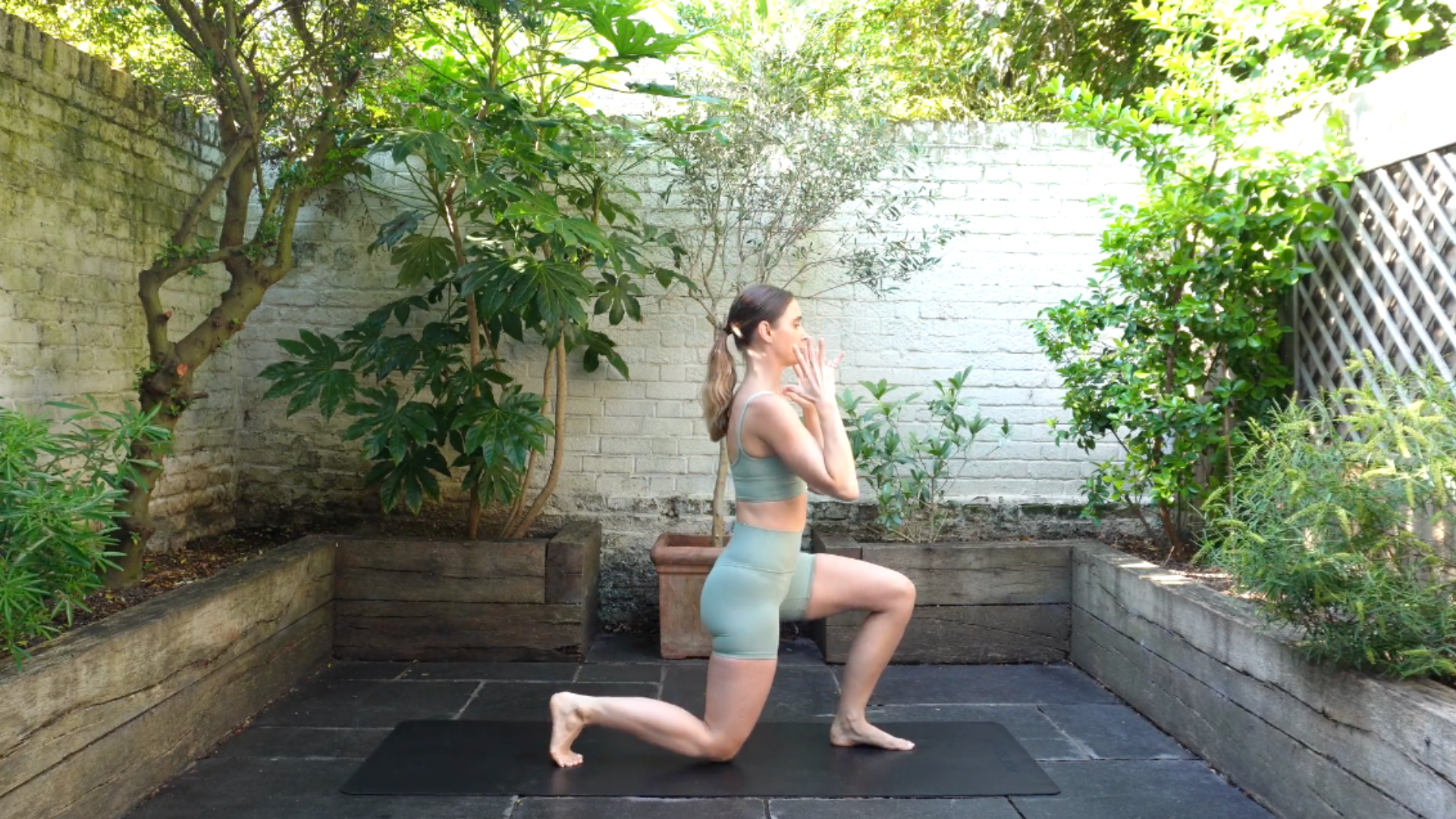
The Benefits: This classic exercise helps with lower body strength and hip flexibility, as well as core and shoulder mobility.
How to Do It: Start by stepping one foot out into a lunge, keeping your legs hip distance apart. As you lunge, pull both hands down towards your shoulders. Then, as you lift up out of your lunge by extending through both legs, reach both arms overhead into a shoulder press. Engage your core to maintain balance throughout the movement. Repeat for 12 reps on one side before switching to the other side.
3. Ab Prep
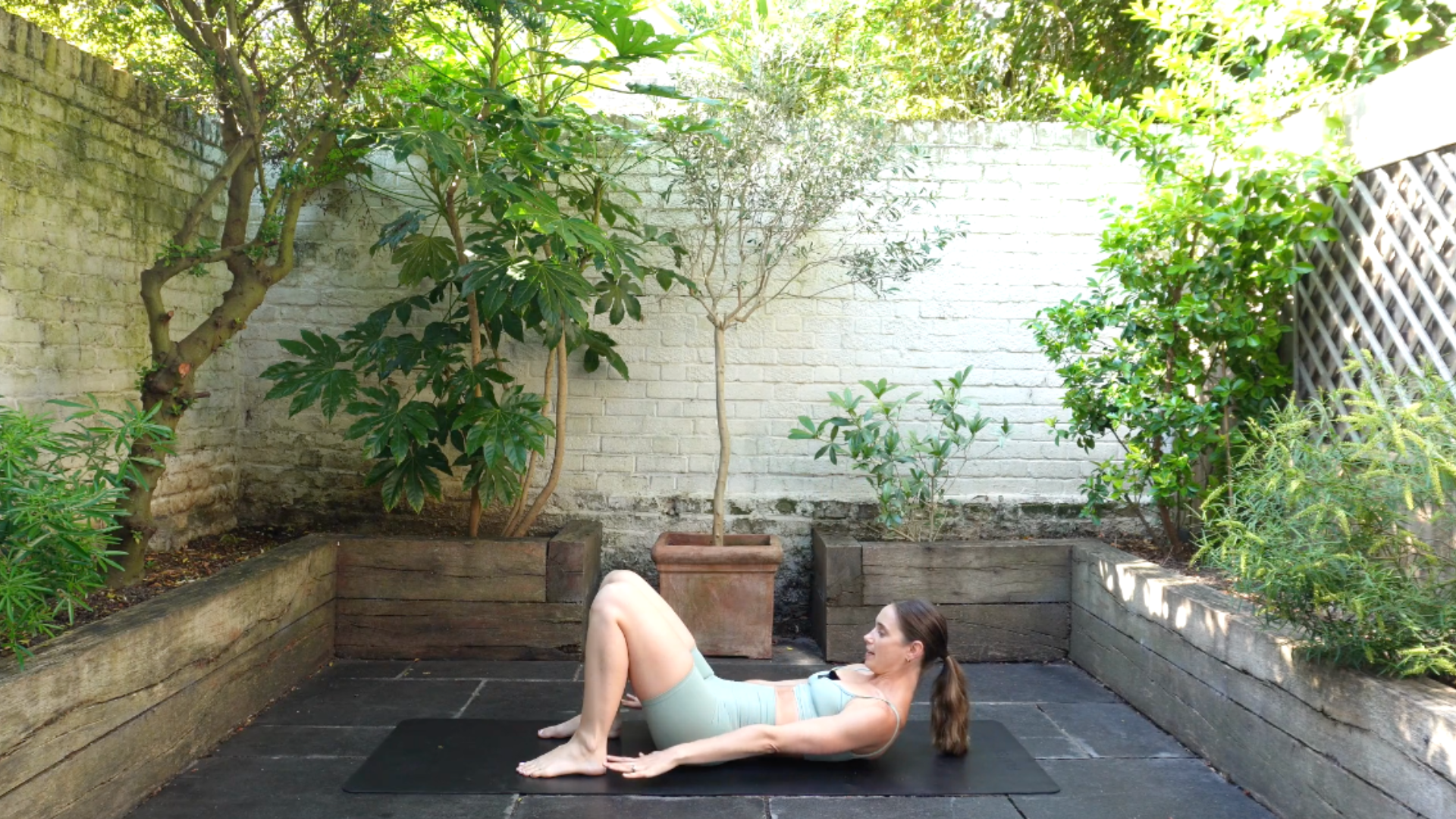
The Benefits: Wakes up the abs and is effective for developing a strong core, which is essential for functional movement.
How to Do It: Lie on your back with your knees bent and feet flat on the floor, lengthening your arms above your head. Lift your head, shoulders and upper back off the floor, lengthening your arms until they are parallel with the mat, while engaging your core and keeping your lower back in a neutral position. Hold the top position briefly, then lower back down with control. Repeat for 12 reps.
4. Toe Taps
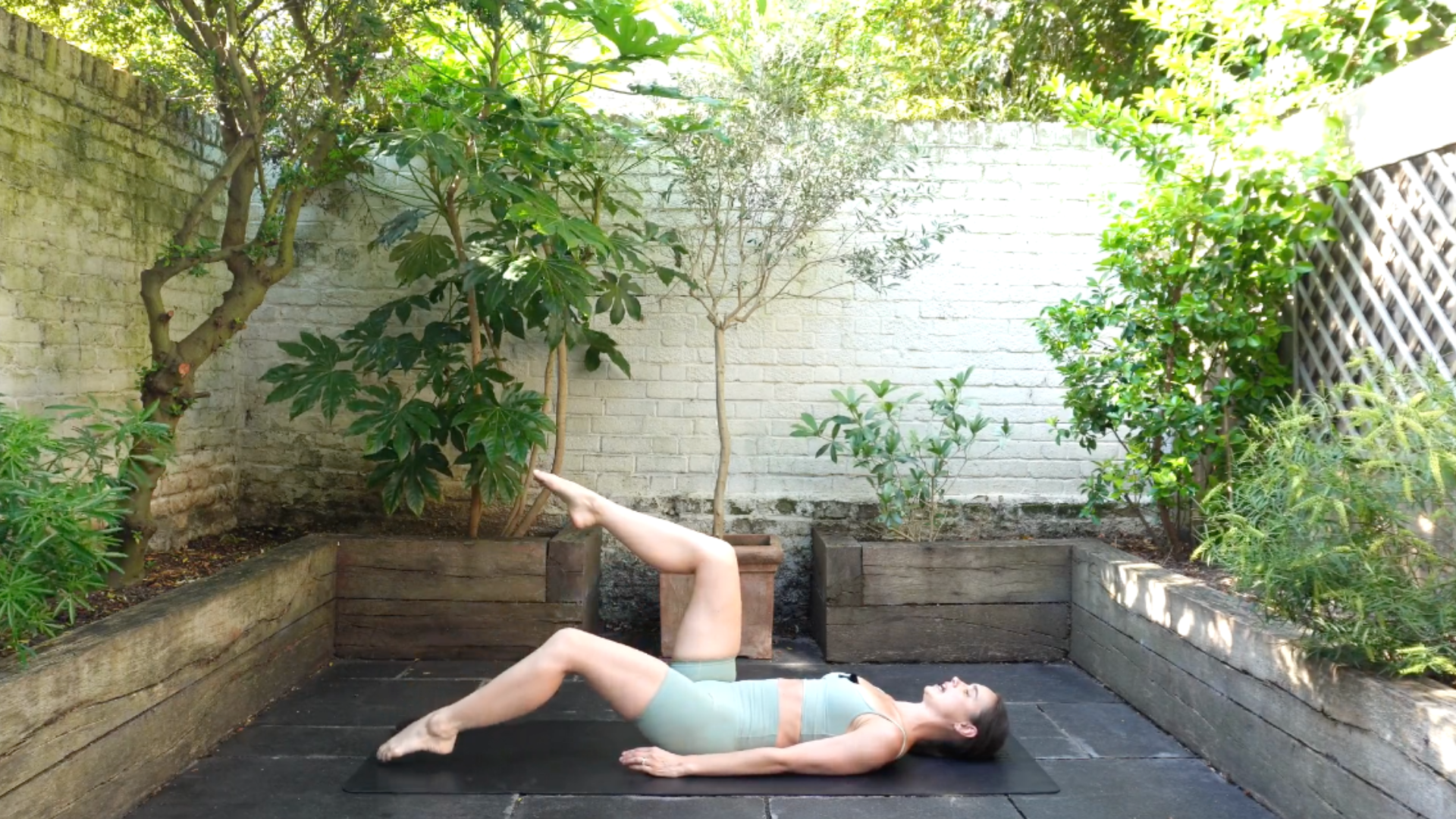
The Benefits: Strengthens the lower abdominal muscles and improves core stability. Toe taps also enhance hip flexibility and promote better lower body control.
How to Do It: Lie on your back with your knees bent and feet lifted off the floor, forming a tabletop position. Press your spine down towards an imprint with the mat. Slowly lower one foot toward the floor while keeping your opposite knee bent and maintaining a stable core, then return to the start position and repeat with the other foot. Continue alternating taps while keeping your lower back imprinted and your core engaged. Repeat for 12 taps each side.
5. Running Plank
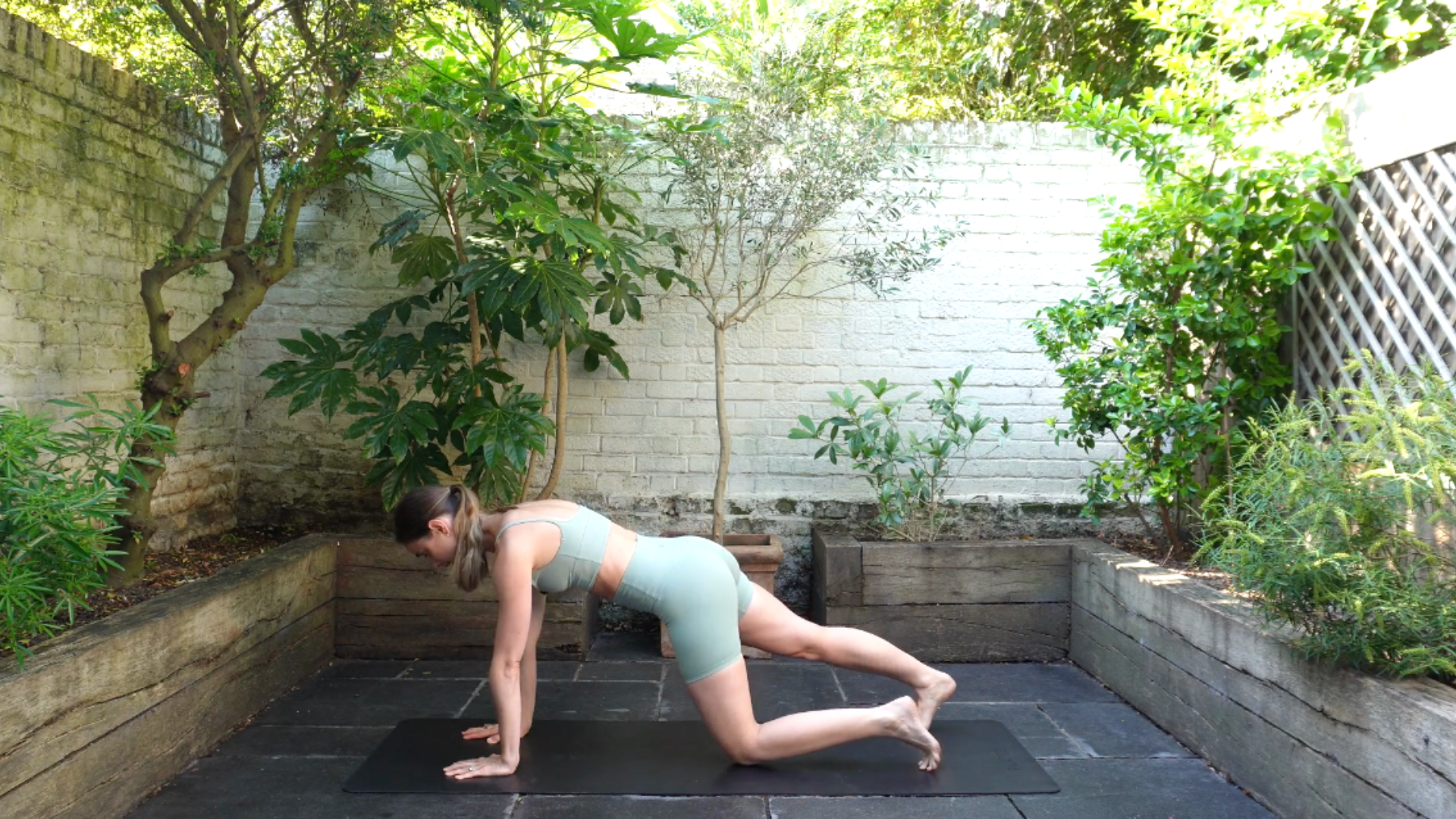
The Benefits: Builds core strength and stability by engaging the deep abdominals, obliques and lower back muscles.
How to Do It: Start in a high plank position with your hands under your shoulders and your body in a long stable line from head to heels, pulling your belly to spine. While keeping your core engaged and hips stable, tap one knee down to the mat then lift it back up as you switch to the other knee. Keep alternating knee taps while maintaining proper plank form throughout the exercise. Repeat for 12 taps each side.
7. Side Bend + Elbow Knee Crunch
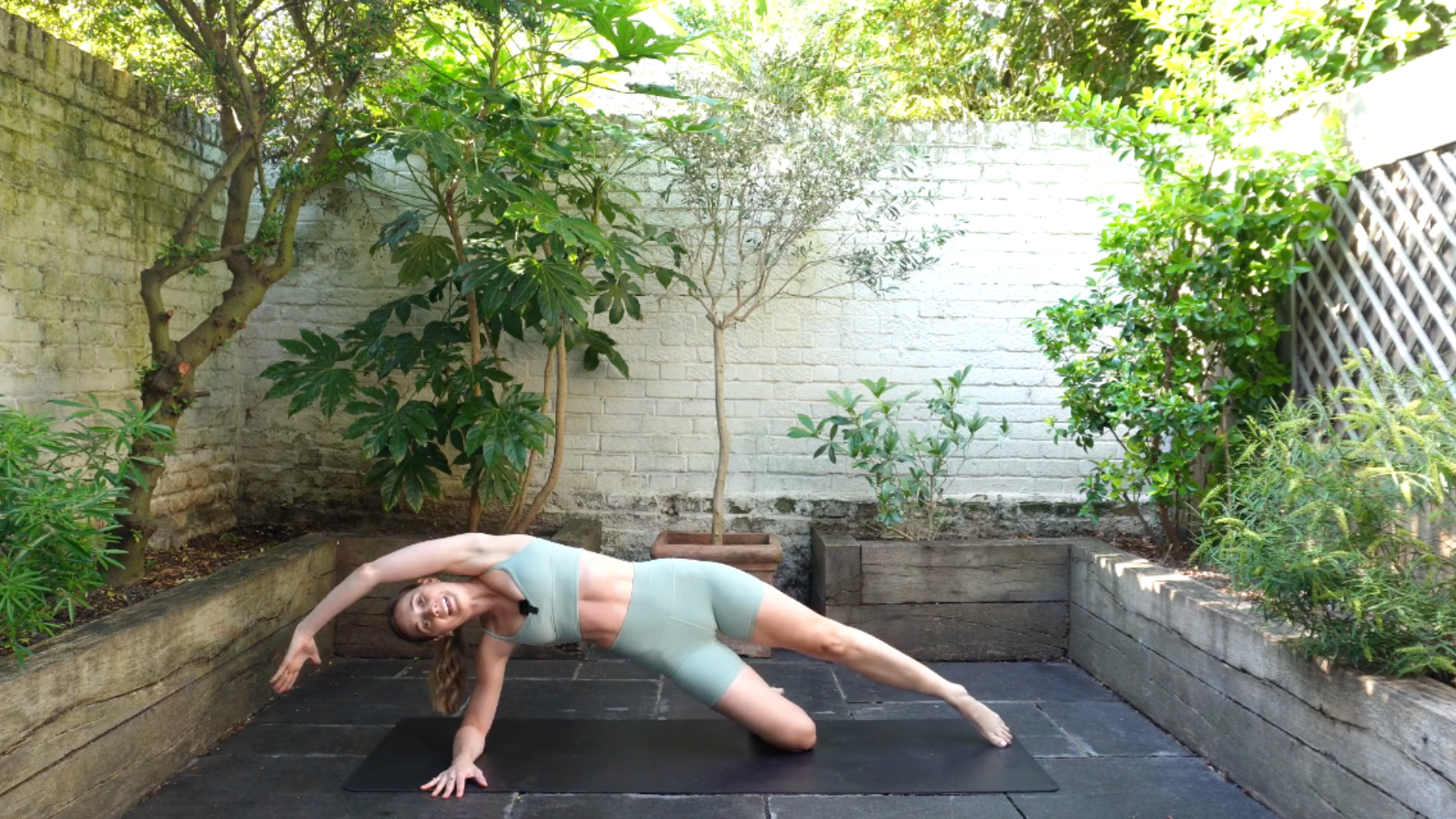
The Benefits: Strengthens the obliques, shoulders and glutes while enhancing core stability and balance.
How to Do It: Start in a modified side plank position, with your bottom leg bent, top leg lengthened, bottom forearm on the mat and top arm resting on your top leg. Lift your hips into a side bend, drawing your top arm over your head, creating a rainbow shape from your top hand to hip to foot. Hold at the top, then draw the top elbow and knee towards one another into a crunch, before lengthening them back out to a side bend. Lower your hips to return back to the start position with control. Repeat for 12 reps on one side before switching to the other side.
7. Clam Kickout
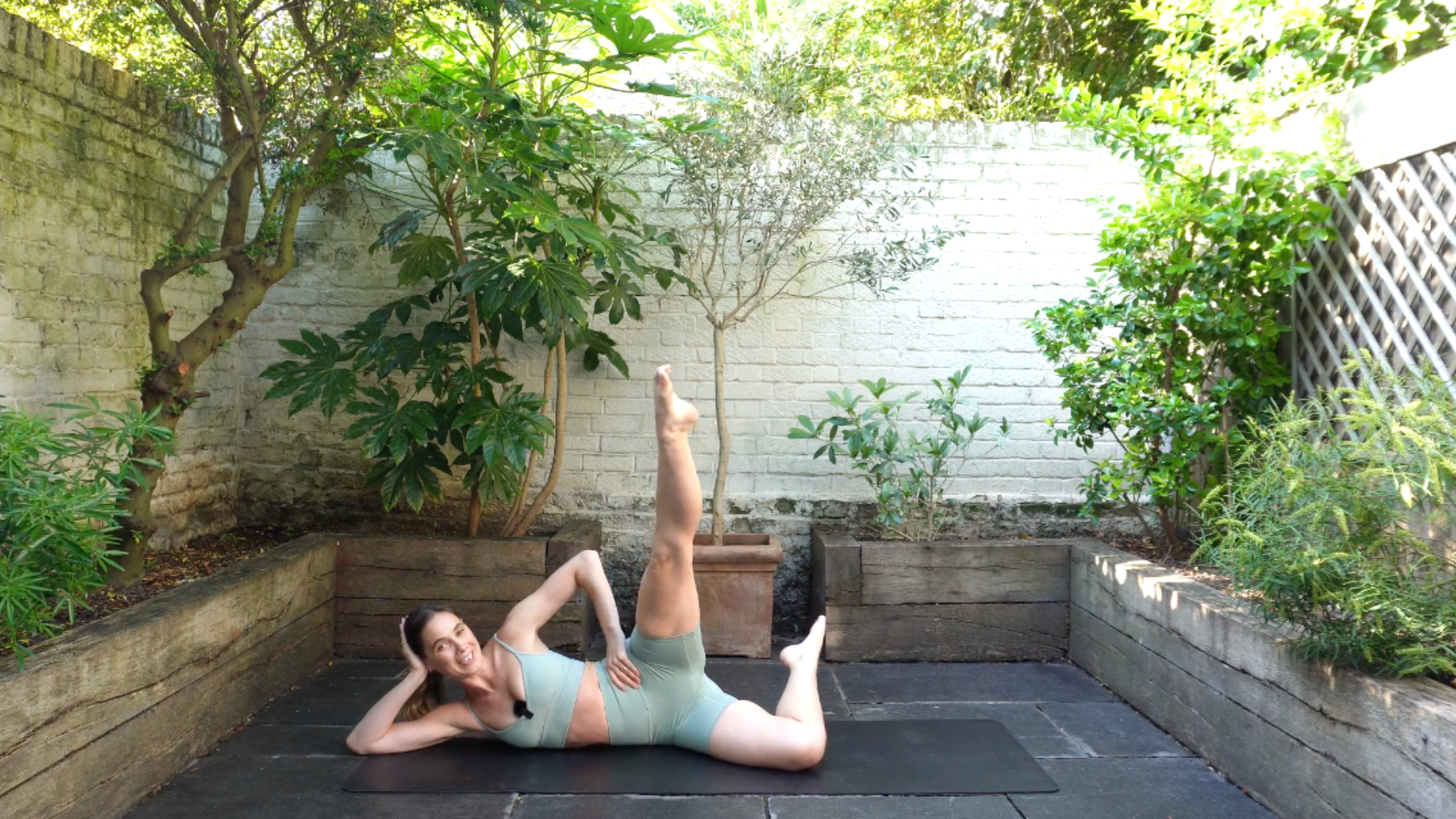
The Benefits: Targets the gluteus medius and minimus, improving hip stability and strengthening the outer thighs. It also helps to improve hip mobility and reduce the risk of lower back and knee injuries by reinforcing the muscles that support the pelvis.
How to Do It: Lie on your side with your knees bent and stacked, feet sat directly beneath your hips, and support your head with your lower arm. Lift your top knee while keeping your feet together in a clamshell motion, then extend your top leg straight out into a kick – in front of your body and up high. Then, return to the bent knee position and lower your leg back down. Repeat for 12 reps on one side before switching to the other side.

